Soccer newsletter: Examining the cause of LAFC’s downward spiral — and what’s next
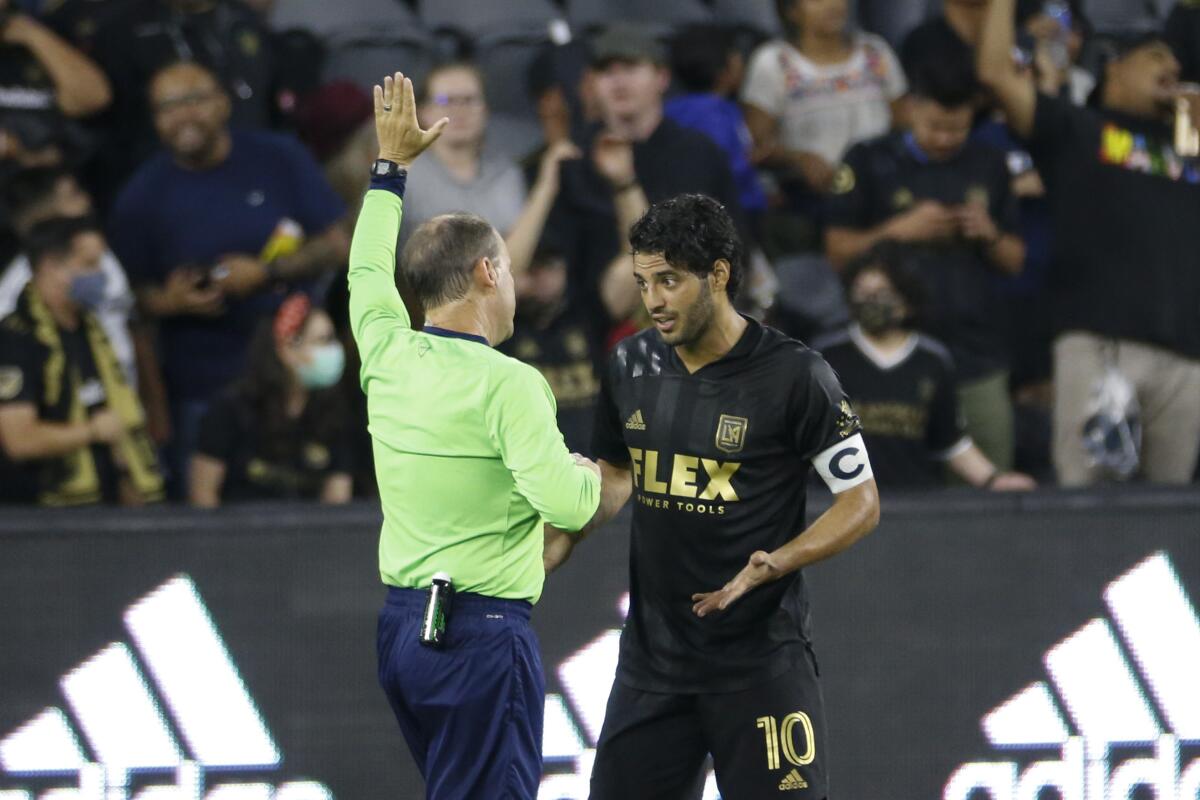
- Share via
Hello and welcome to the L.A. Times soccer newsletter. I’m Kevin Baxter, the Times’ soccer writer, and we start today with a trip back to the fall of 2019 when LAFC, in its second year in MLS, was putting the finishing touches on the greatest regular season in league history while down in Georgia, third-year Atlanta United was preparing for another deep playoff run in defense of its 2018 MLS Cup title.
LAFC’s Carlos Vela scored 34 goals that year and won the Golden Boot and MVP award while breaking the single-season scoring record set a year earlier by Atlanta’s Josef Martínez, the reigning MVP. The organizations, which played similar styles — attractive, dynamic and attacking — spoke glowingly of one another while the rest of the league credited them with raising the bar in the league and ushering in what came to be known as MLS 3.0.
Two seasons later, it looks like that operating system has crashed. During the last two years, the teams have combined to lose 10 more games than they’ve won and score five fewer goals than they’ve allowed. And more changes are on the way, with LAFC’s Diego Rossi, the 2020 MLS scoring champion, moving to Turkish club Fenerbahce on a loan with a reported $6 million option to buy, according to sources in Turkey. The deal will be announced Tuesday.
Atlanta (6-7-9) missed the playoffs last season and is positioned to do so again this year. LAFC (6-9-6) is even worse off. After twice giving up second-half leads in Saturday’s draw with the Galaxy in El Tráfico, the team is winless in eight consecutive games (0-5-3) dating to mid-July.
Two years ago, LAFC tied the league record for goals in a season and broke the mark for goal differential at +48. This year it has scored just three times from open play in five August games and has conceded three more goals than it has scored on the season. And speaking of most valuable players, LAFC hasn’t won since center back Eddie Segura went out with an injury after a July 24 draw with Vancouver. That’s bad news for the black and gold since Segura will miss the remainder of the season after undergoing surgery to repair a torn ACL in his right knee.
It’s been a long fall from grace — but not necessarily a surprising one.
“This is a difficult league to maintain a high level of success. And that’s by design,” said Alexi Lalas, a former MLS player, president and general manager.
The league’s salary-cap structure is intended to produce parity and prevent dynasties by forcing player movement and regular roster overalls. After its record-setting 2019 season, for example, LAFC declined to re-sign defender Steven Beitashour and goalkeeper Tyler Miller and chose to trade center back Walker Zimmerman to Nashville for more than a $1 million in allocation money.
The team never really replaced any of the three on the field, and the leadership void Beitashour and Zimmerman left in the dressing room is even bigger.
“Historically, incredible teams made everything that they touched turn to gold. So when you come on the scene like that, there’s the expectation that you have solved whatever problems or challenges are part of this league,” Lalas said of the quick starts by Atlanta United and LAFC. “At some point a little MLS rain is going to fall on every single team.”
Teams occasionally have been able to keep parity at bay. The Galaxy made four MLS Cup finals, winning three, in a six-year stretch under Bruce Arena. The Seattle Sounders have had a winning record and qualified for the playoffs in all 12 of their seasons, making the Cup final four times in the last five seasons.
That’s the exception to the rule, though. More common is the experience of the Columbus Crew, the league champion a year ago but currently out of a playoff berth while battling through injuries to eight players, including winger Kevin Molino (ACL) defensive midfielder Artur (hernia surgery) and forward Gyasi Zardes (hamstring).
The Galaxy was the last team to win back-to-back championships, in 2011-12.
“Because [of] player turnover and the way things go, one team could be very successful one season and not the next,” former MLS and national team forward Hérculez Gómez said. “LAFC, championship-caliber team one year and then we see how it is now. Atlanta, very good one year and then we see how it is now.
“They can change dramatically, drastically.”
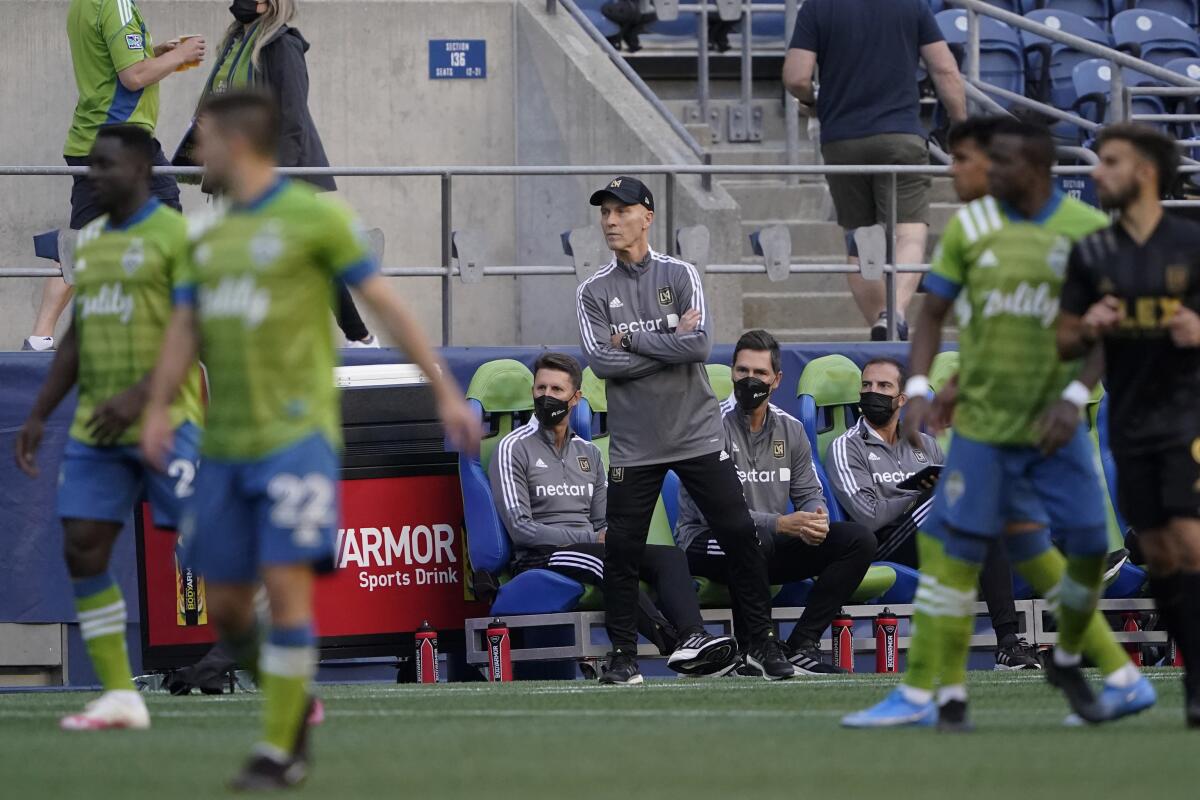
Atlanta is deep into the installation of a new operating system to replace the malfunctioning MLS 3.0. The team has used five managers since Tata Martino, the team’s first coach, left for the Mexican national team after winning MLS Cup in 2018. LAFC could begin a similar transition this winter – if not earlier.
Coach Bob Bradley reportedly is out of contract after this season and his message no longer appears to be getting through to his players. There’s nothing wrong with the message; it’s the same one he used two seasons ago. But perhaps it needs a different messenger with the team mired in a franchise-record winless streak.
“Things can get stale, things can get predictable,” Lalas said. “And you know, the league continues to change. So even what worked five years ago, doesn’t necessarily work in the same way or work at all, five years later.”
Vela, the player Bradley repeatedly hailed as an inspirational leader, has looked uninterested for most of the season. When he’s on the field, that is — he’s missed nearly half of LAFC’s games the last two years to injury and personal reasons. His contract — the richest is MLS at $6.3 million, according to the players union — also is up this winter and in a recent interview with TUDN he talked about returning to Europe.
“I miss playing in Europe,” he said in Spanish, not exactly the vote of confidence the team needed from its captain with more than two months left in the season.
LAFC shipped out midfielder Mark-Anthony Kaye earlier this month and defender Jordan Harvey, who has played just two minutes this season, likely won’t return next season when he’ll be 38. If Vela and Rossi — LAFC’s second-highest-paid player at just more than $1.05 million — also depart, just three players would remain from 2018, the team’s debut season, and just seven from the 2019 Supporters’ Shield winners.
“The question will be, ‘Will the real Atlanta and LAFC please stand up?’ Was it what you started out with? Or what was it what you have become?” Lalas said. “If I’m either of those teams, I would be doing everything in my power to at least capture some of that magic that you had to not waste all of that goodwill and everything that had been built up for the first few years.
“MLS is notorious for taking the best-laid plans and throwing them out the window. It’s not easy. It’s not an exact science, even in the best of times. And in a league like MLS, where we do have this manufactured parity, it’s very difficult to just say, ‘Well, I’m just going to do this. And it’s going to work this year, and then it’s going to work again.’ ”
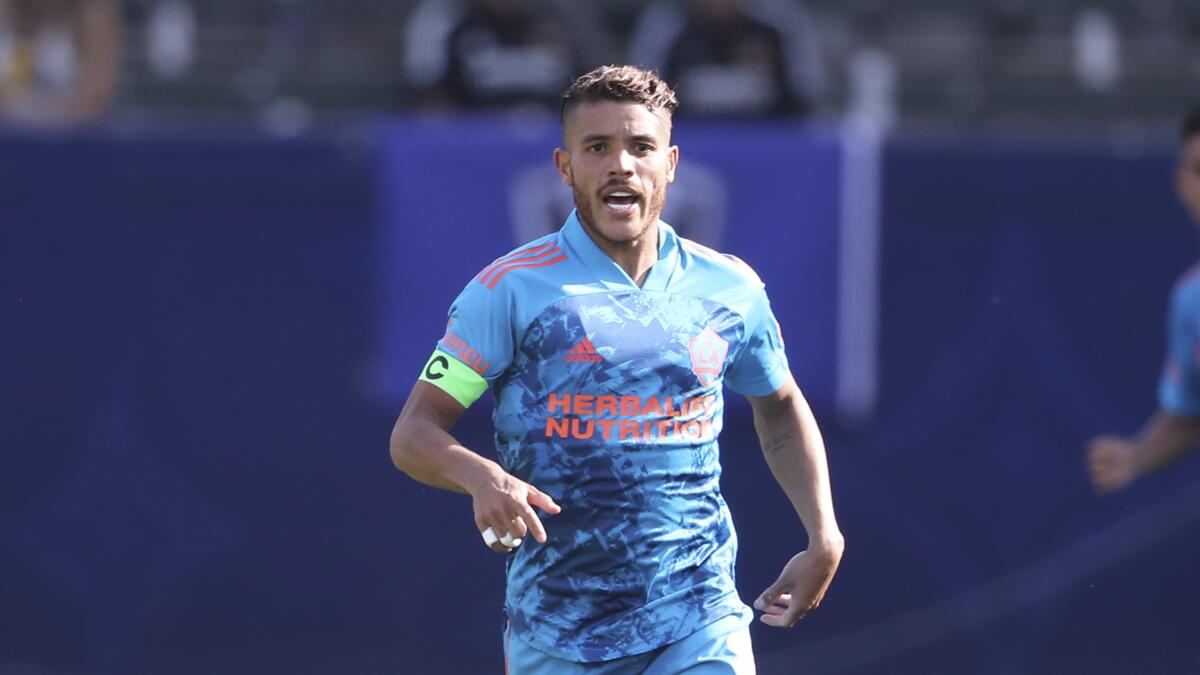
Dos Santos: The future will come, with or without the Galaxy
Bradley and Vela aren’t the only people who will see their contracts expire at the end of the season. Galaxy designated player Jonathan dos Santos, who has been with the team since 2017, also is in the final year of his deal.
He made clear his desire to stay earlier this season, but he no longer appears optimistic that will happen and already has begun considering his options.
“Of course I would like to stay, but I know how it works,” said Dos Santos, 31. “I don’t know what’s going to happen in the future and I cannot predict that.”
Only Dan Steres and Sebastian Lletget have been with the Galaxy’s first team longer. But Dos Santos has battled injuries in recent seasons and between that and international duty with Mexico, he has played less than 42% of the Galaxy’s available minutes the last two seasons. That’s simply not enough production for a player whose $2 million salary is the second-highest on the team.
Dos Santos, who also has expressed a desire to stay close to his family in Mexico, was asked whether that might lead to a move to Liga MX following the one his brother Giovani made three years ago.
“I don’t know, to be honest,” he said. “MLS, Mexico … I don’t know. I want to think of the present right now, enjoy my moment with my team.
“The future will come.”
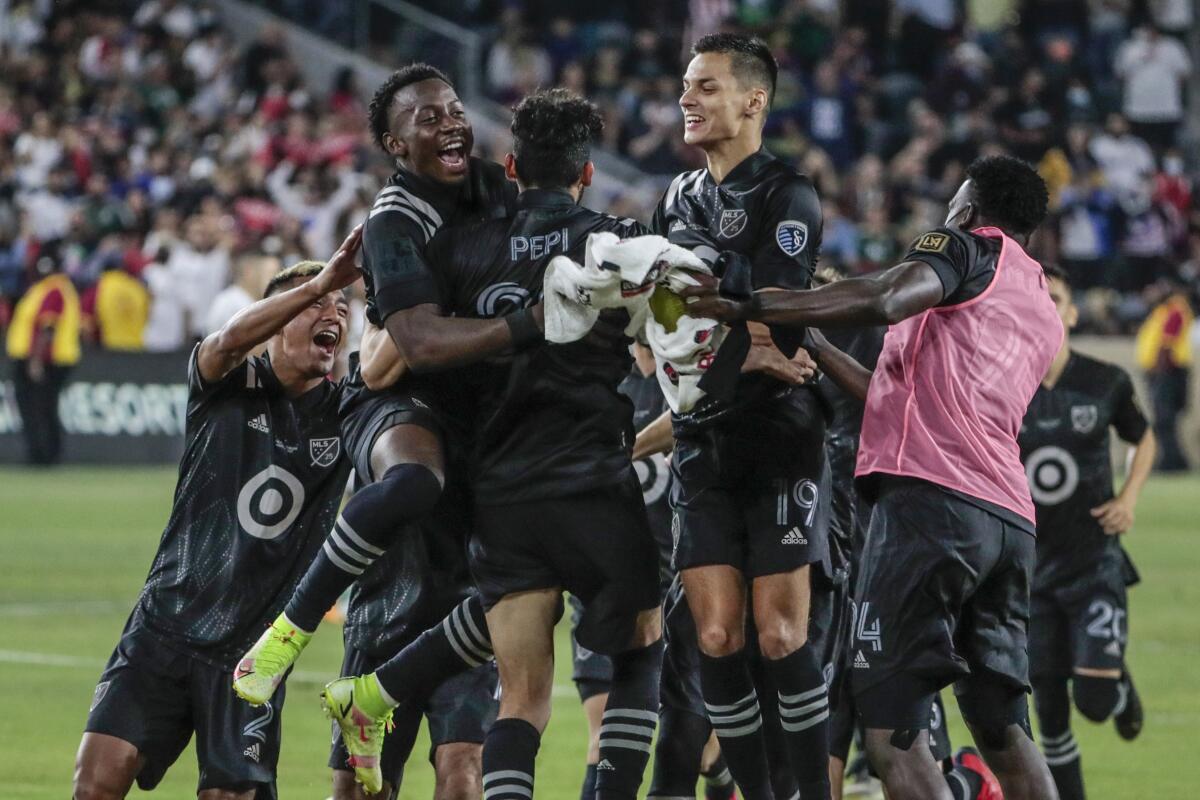
MLS All-Star Game: We told ya so
Last week’s MLS-Liga MX All-Star Game proved true a couple of things that had long been assumed about the growing cross-border partnership between the leagues.
The first was MLS, which rarely has been competitive against top Liga MX teams in club competitions such as the CONCACAF Champions League, could beat the Mexicans in an all-star format. And it did, with two penalty-kick saves from New England Revolution goalkeeper Matt Turner lifting the U.S.-based league to victory in a tiebreaking shootout.
The second was a collaboration with Liga MX, the most-watched soccer league in the U.S., would goose MLS’ TV ratings. And it did, with Univision’s All-Star Game broadcast averaging 1.4 million viewers in Spanish, 1.25 million more than the 175,000 who watched on English on FS1.
The Spanish-language telecast on Univision and TUDN also drew an audience of 736,000 in the coveted 18-49 demographic, most ever in that age group for the All-Star game. The FS1 number, meanwhile, was a record low for the MLS All-Star game in English, down nearly half a million from the ESPN audience in 2014, according to Soccer America.
Liga MX has dominated club competitions with MLS teams because Mexico doesn’t have salary caps and other restrictions MLS does. MLS does have a designated player rule, which allows each team to sign up to three players to contracts that exceed the salary cap. And the addition of allocation money and the U-22 initiative has helped bring talent to the top end of rosters despite the pay limits.
But Liga MX owners can spend throughout their roster, making their teams deeper.
“I’d say it’s gotten better, but there’s still such a huge gap,” said Gómez, who played in MLS and Liga MX.
That doesn’t really come into play in an all-star format, though, one U.S. players are familiar with but which is foreign in Mexico.
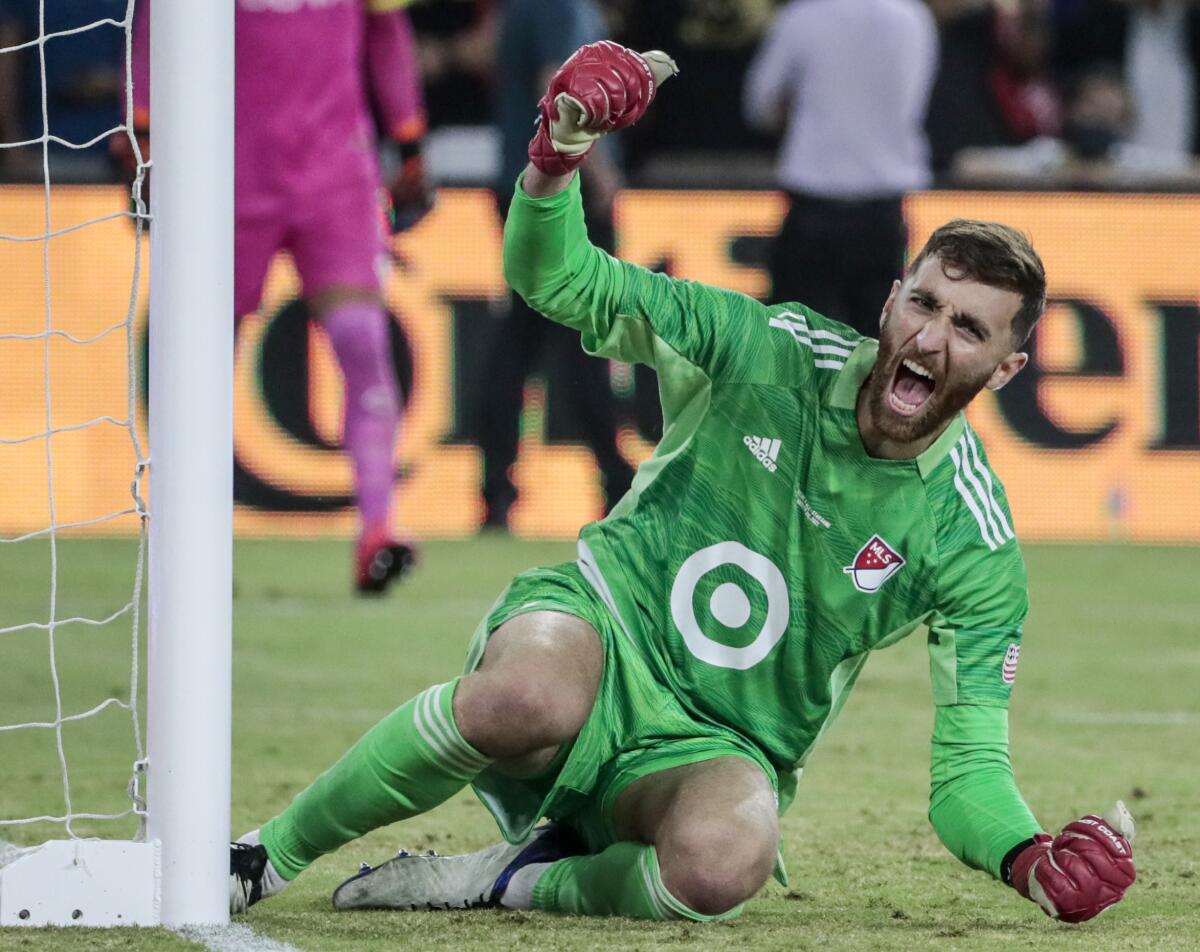
“The All-Star Game, you’re talking about somewhat equal footing,” said Steven A. Bank, the Paul Hastings professor of business law at UCLA. “Neither team is an actual team. They’re both going to be all-stars. In theory, the MLS [designated players] are paid as much or more than Liga MX all-stars.”
The takeaway then is MLS and Liga MX are relatively equal when it comes to top-of-the-roster star power, but the teams are far from equal throughout the roster, where Mexico maintains a massive edge thanks to the league’s salary structure.
As for TV, MLS has long lagged behind Liga MX. And though the league has seen double-digit growth in its ratings on all platforms this season, Liga MX remains far more popular in the U.S., with Univision nearly doubling the average MLS audience for the 130 Liga MX games it broadcast on its family of networks in this year’s Clausura tournament. Closer ties with the Mexican league, the argument has gone, would give MLS much-needed access and exposure to that audience.
The numbers show that last Wednesday it worked. But will viewers return when MLS teams play one another?
“One of the great things that works for both countries is television,” said Mike Sorber, LAFC’s director of soccer operations and a former Liga MX defender. “If there’s a Mexican team playing and there’s a U.S. team playing, you get a lot of interest. Because the countries are so close, there’s a cultural connection that works very well for our sport. And when there’s competition, people really tune in.
“That’s good for development of our league, that’s good for development or our coaches and executives and everything on all levels.”
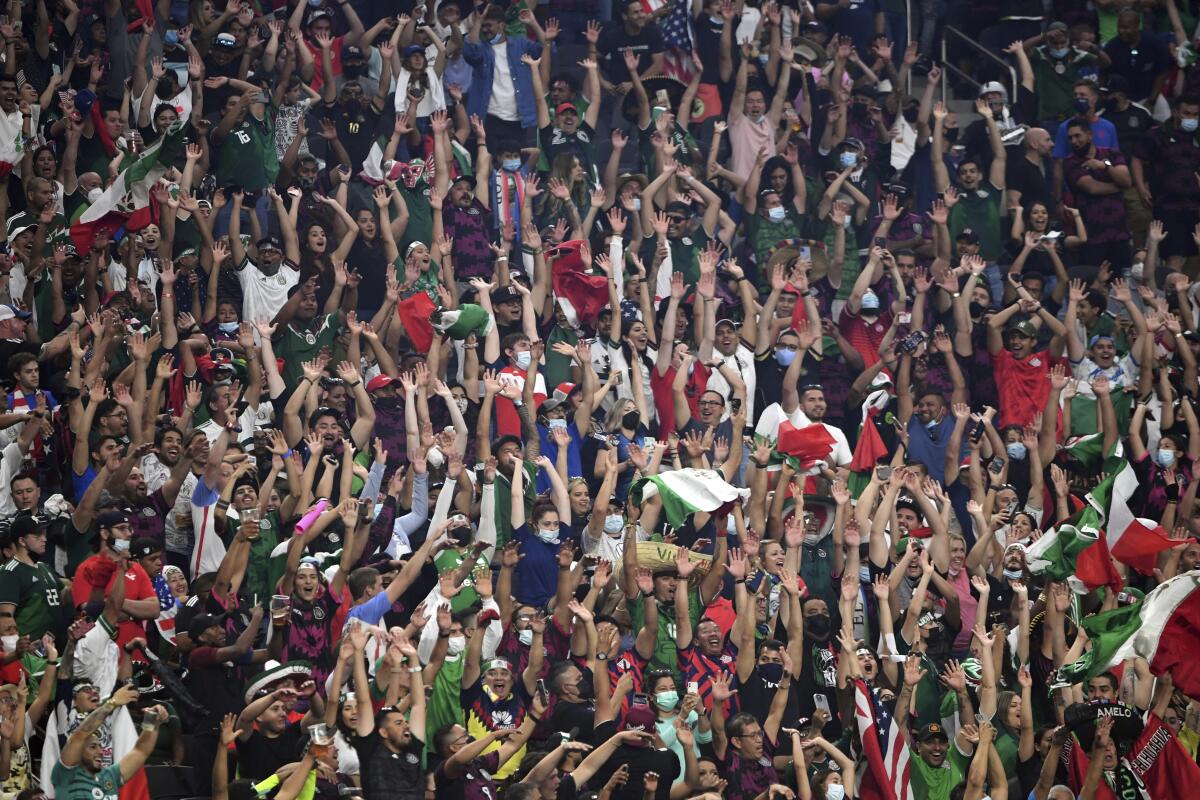
Counting the house
Soccer America compiled a list of the 10 largest soccer crowds in the U.S. this year, and the numbers are impressive considering COVID-19 restrictions limited attendance at sporting events in many places for nearly half the year.
What else do these crowds have in common? Mexico’s national team, which has played 12 games in the U.S. this year, accounted for seven of the nine largest crowds, once again underscoring the fact El Tri is America’s Team.
1. Mexico vs. Canada (Gold Cup in Houston) 70,304
2. Mexico vs. Honduras (men’s friendly in Atlanta) 70,072
3. Atlanta United vs. Columbus Crew (MLS) 67,507
4. Atlanta United vs. LAFC (MLS) 67,503
5. Mexico vs. Honduras (Gold Cup in Glendale, Ariz.) 64,211
6. USA vs. Mexico (Gold Cup in Las Vegas) 61,114
7. Mexico vs. Nigeria (men’s friendly in Los Angeles) 53,258
8. Mexico vs. El Salvador (Gold Cup in Dallas) 45,792
9. Seattle Sounders vs. Portland Timbers (MLS), 45,737
10. Mexico vs. Iceland (men’s friendly in Arlington, Texas), 44,892
The NWSL also did well at the gate last weekend, with Sunday’s OL Reign-Portland Thorns game at Lumen Field in Seattle drawing a league-record crowd of 27,248. The game was part of a doubleheader with the Sounders, who announced an attendance of 45,737 for their match with the Timbers.
And finally there’s this ...
Cindy Cone, appointed president of the U.S. Soccer Federation after the resignation of Carlos Cordeiro in March 2020, said she will run for re-election to a full four-year term in March. Cone ran unopposed last February to serve out the final year of Cordeiro’s vacated term.
Podcast
Don’t miss my weekly podcast on the Corner of the Galaxy site as co-host Josh Guesman and I discuss the Galaxy each Monday. You can listen to the most recent podcast here.
Quotebook
“It’s nice to win a trophy in Nations League. It’s nice to win a Gold Cup trophy. It’s nice to be ranked 10th in the world in FIFA rankings. But it doesn’t mean anything if you don’t qualify for the World Cup. Our mission is not even close to being complete. It would be a failure if we didn’t qualify for the World Cup. So this is our next challenge. Everything we’ve done until now is only a foundation.”
USMNT coach Gregg Berhalter on the final round of World Cup qualifying, which begins Thursday in El Salvador
Until next time...
Stay tuned for future newsletters. Subscribe here, and I’ll come right to your inbox. Something else you’d like to see? Email me. Or follow me on Twitter: @kbaxter11.




